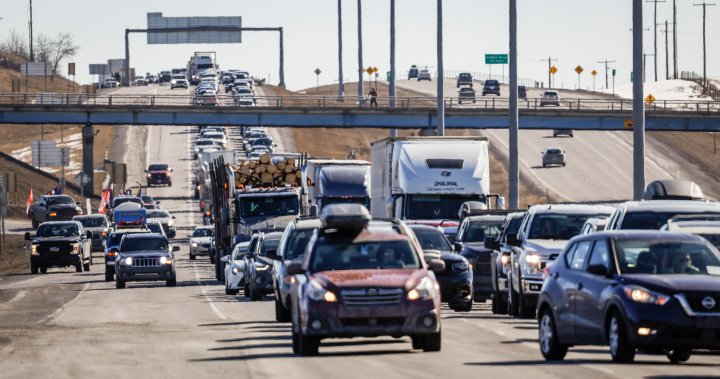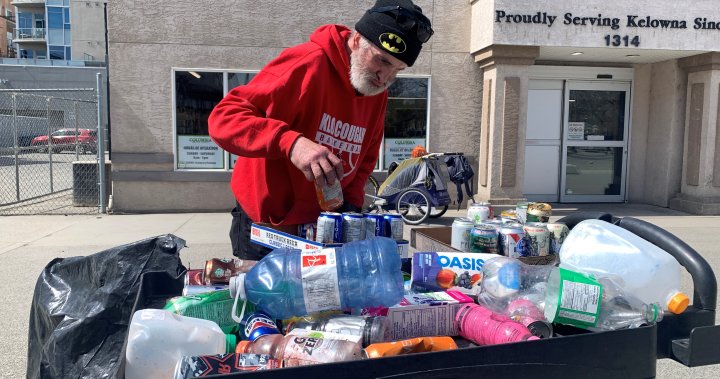The hard work by Canadians to reduce emissions is paying off as new data shows the country has “bent the curve,” Environment Minister Steven Guilbeault said Thursday.
Canada’s greenhouse gas emissions in 2022 were the lowest they’ve been in 25 years, with the exception of the first two years of the pandemic, according to the National Inventory Report released on Thursday.
The oil and gas sector alone contributed to 217 megatonnes (Mt), or 31 per cent of Canada’s emissions. Transportation was the second most polluting sector, with 156 Mt or 22 per cent of Canada’s emissions.
Canada accounts for nearly 1.5 per cent of global greenhouse gas emissions, making it the 11th largest emitter in the world.
Buildings accounted for 89 Mt (13 per cent), while heavy industry and agriculture accounted for 78 Mt (11 per cent) and 70 Mt (10 per cent), respectively.
Canada’s emissions in 2022 were lower, by 44 Mt, than Canada’s pre-pandemic 2019 levels.
Guilbeault told reporters that Canada’s 2022 emissions of 708 Mt are the lowest they have been in 25 years, with the exception of the first two years of the COVID‑19 pandemic (2020 and 2021), when the sudden, global economic slowdown caused emissions to drop sharply.
Canada’s emissions saw a decrease of 54 Mt (7.1 per cent) compared with 2005, the base year for Canada’s 2030 GHG emission reduction target.
“The Government of Canada has invested over $120 billion to support provinces and territories, Indigenous communities, businesses and Canadians in the pursuit of a net-zero economy,” Guilbeault told reporters Thursday.
The email you need for the day’s
top news stories from Canada and around the world.
“Canada’s 2024 National Inventory Report confirms we have bent the curve, and emissions remain on a long-term downward track while we grow a clean, sustainable, and strong economy.”
In his comments, the minister said the data shows the “hard work of Canadians is paying off.”
Meanwhile, critics say they want to see more action from those big-industry emitters.
“The electricity sector, small businesses and heavy industry are working to reduce emissions. Families are doing their best to make climate-friendly choices – it’s only fair to hold the country’s highest-emitting companies accountable for reducing their emissions,” said Alex Cool-Fergus, national policy manager at Climate Action Network Canada.
Cool-Fergus pointed to 2023’s record wildfire season, along with deadly heat domes and record flooding in recent years as reasons why climate action must be a top priority.
“Canadians have had enough with delays. They want the country’s most polluting industry to be held to account.”
Keith Brooks, program director of Environmental Defence Canada, said the oil and gas sector needed to pull its weight.
“The electricity sector is the main driver of emissions reduction, thanks to the coal phase-out. Canada’s oil and gas industry, the country’s most polluting industry, is failing to do its part,” Brooks said.
Any progress in reducing the industry’s methane emissions has been “wiped out” by increases in oil and gas production, Brooks argues.
“The oil and gas industry has been unwilling to reduce its emissions voluntarily, instead banking on ineffective technology like carbon capture and storage (CCS),” he said.
On Wednesday, Edmonton-based Capital Power announced that it would not be pursuing a $2.4-billion carbon capture project due to high costs.
When asked about the project’s demise Thursday, Guilbeault said that carbon capture is “not the be-all, end-all of fighting for climate change.”
He noted the report released Thursday shows that “carbon capture and storage has contributed to seven million tonnes of pollution being sucked out of the atmosphere.”
“It’s one of 150 measures that we’re putting in place and we think that it can play a role,” he added.
However, Environmental Defence argued that 7 Mt amounts to around 0.0004 per cent of Canada’s emissions since 2000 and is not a viable solution.
“Carbon capture is unnecessary, ineffective and expensive,” said Julia Levin, associate director at Environmental Defence.
“The bottom line: the most effective way to deal with carbon dioxide emissions is to prevent them from ever being created, rather than trying to pluck them from the air or smokestacks and inject them underground.”
© 2024 Global News, a division of Corus Entertainment Inc.




